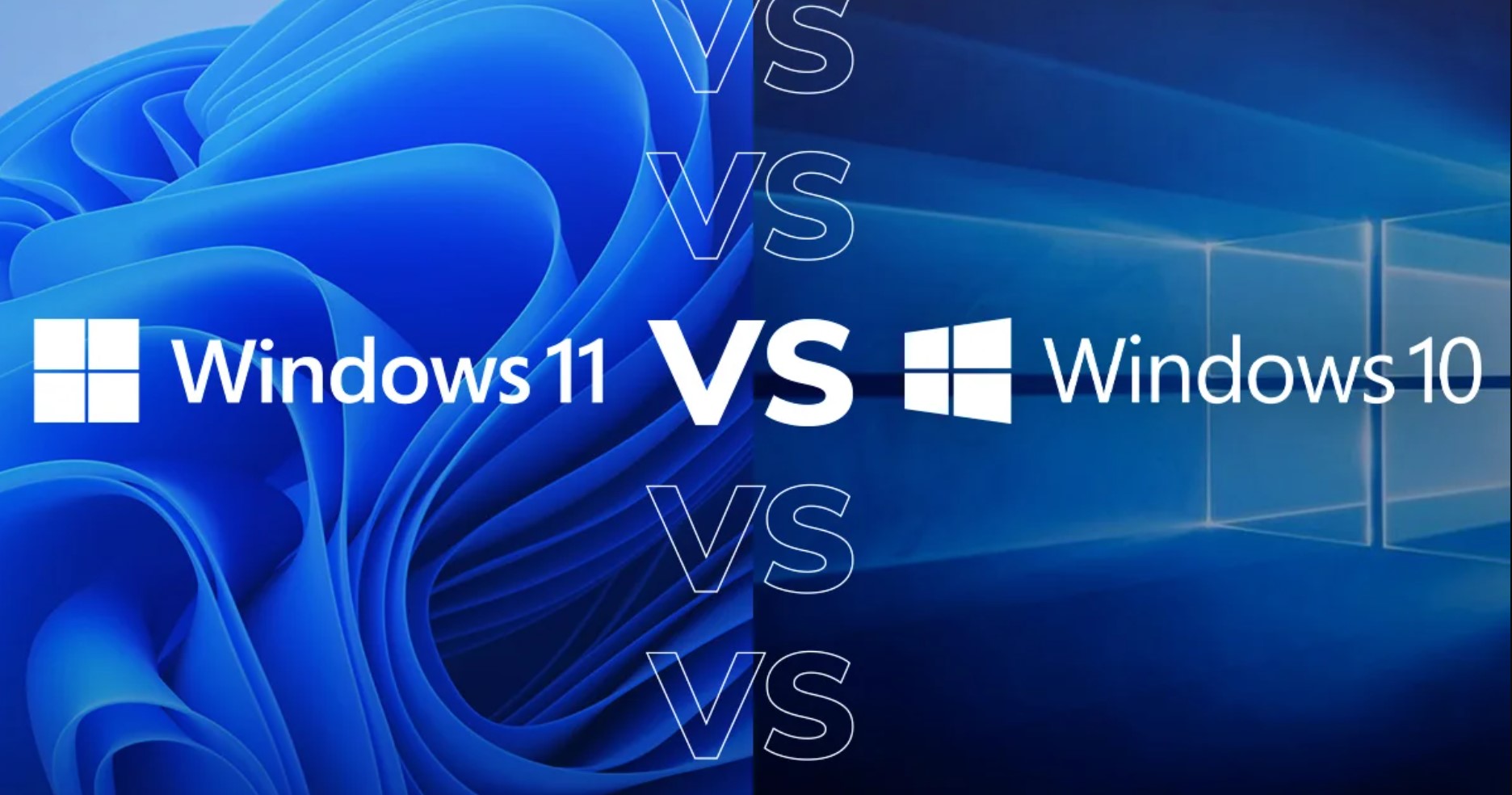With the release of Windows 11, Microsoft introduced an upgraded operating system promising enhanced performance and new features. However, many users wonder if it’s worth upgrading from Windows 10. In this article, we’ll delve into a detailed comparison of Windows 11 and Windows 10, examining their respective performances and features. Whether you’re a long-time Windows user or considering switching from another OS, this article will provide valuable insights to help you make an informed decision.
Windows 11 vs. Windows 10: Performance Showdown
In this section, we’ll analyze the performance of Windows 11 and Windows 10 side by side, considering factors like speed, boot times, resource utilization, and gaming performance.
1. Boot Times: Which OS Wins the Race?
- Windows 11’s optimized boot process promises lightning-fast startups, making your PC ready to use in no time. Leveraging the new “Instant Wake” technology, Windows 11 significantly reduces boot times compared to its predecessor, Windows 10.
- Windows 10 has respectable boot times, but it falls short when compared to Windows 11’s snappy start-ups. With Windows 11, your computer leaps into action with remarkable efficiency.
2. Resource Utilization: Efficiency Matters
- Resource management is crucial for a smooth computing experience. Windows 11 introduces better resource utilization algorithms, resulting in optimized RAM and CPU usage. This improvement leads to enhanced multitasking and overall system responsiveness.
- Windows 10 handles resources reasonably well, but Windows 11’s refined approach undoubtedly takes the lead, ensuring your PC runs more efficiently.
3. Speed and Responsiveness: The Need for Speed
- Windows 11’s revamped architecture enhances its speed and responsiveness, offering seamless transitions and smooth animations. Whether you’re opening applications or navigating the interface, Windows 11 delivers a swift and pleasant experience.
- Windows 10’s performance is reliable, but Windows 11 takes it a step further, providing users with a buttery-smooth interface and quicker application launches.
4. Gaming Performance: The Ultimate Showdown
- Gamers rejoice as Windows 11 comes equipped with DirectX 12 Ultimate, a game-changer in the gaming world. The improved graphics and reduced latency ensure a superior gaming experience.
- Windows 10 is no slouch when it comes to gaming, but Windows 11 takes it up a notch, offering better frame rates and more immersive gameplay.
Windows 11 vs. Windows 10: Feature Face-Off
Now, let’s explore the features offered by Windows 11 and Windows 10, comparing their functionalities and the exciting additions Windows 11 brings to the table.
Start Menu: The Center of Navigation
Windows 11 introduces a centered Start Menu, providing a fresh and modern feel to the interface. This redesign allows for easy access to frequently used apps and improved customization options.
Windows 10’s Start Menu, while functional, appears more traditional and lacks the visual appeal found in Windows 11.
Taskbar: Aesthetic and Productive
Windows 11’s Taskbar showcases a more streamlined and visually appealing design. The improved functionality includes the ability to pin apps and widgets, enhancing productivity and personalization.
Windows 10’s Taskbar is efficient, but Windows 11’s revamped version introduces an eye-catching design and added convenience.
Snap Layouts and Snap Groups: Multitasking Made Effortless
Windows 11 introduces Snap Layouts and Snap Groups, allowing users to organize multiple windows effortlessly. This feature streamlines multitasking, enabling users to work more efficiently.
Windows 10 offers basic window management, but Windows 11 takes it a step further, providing a more intuitive and user-friendly approach.
Virtual Desktops: For Enhanced Organization
Virtual Desktops in Windows 11 offer a powerful tool for enhanced organization and multitasking. With the ability to create separate workspaces for different tasks, users can stay focused and keep their workflow streamlined. Let’s explore how Virtual Desktops can improve your productivity in Windows 11.
| Feature | Description | Benefits |
| Multiple Workspaces | Virtual Desktops allow users to create multiple workspaces, each with its own set of open applications and windows. This segregation keeps unrelated tasks separate, reducing clutter and improving focus. | – Organized Workflow: Assign specific tasks to different Virtual Desktops, ensuring a clean workspace for each project.
– Minimized Distractions: Switching between Virtual Desktops lets you concentrate on one task at a time, minimizing distractions from unrelated apps or windows. – Enhanced Multitasking: Seamlessly switch between Virtual Desktops to access different projects or applications, improving productivity. |
| Customizable Layouts | Windows 11 allows users to arrange their Virtual Desktops in a way that suits their preferences. You can organize them side by side, stack them, or arrange them in any way that optimizes your workflow. | – Personalized Setup: Tailor the arrangement of Virtual Desktops to match your work style and preference.
– Easy Navigation: Customize the layout to make it intuitive, making it effortless to switch between Virtual Desktops. – Task Grouping: Organize Virtual Desktops based on related tasks or projects, making it easier to manage and access specific groups of applications. |
| Drag-and-Drop Function | Windows 11 offers a convenient drag-and-drop feature that enables users to move applications and windows between Virtual Desktops effortlessly. This functionality allows for seamless transitions as you shift from one task to another. | – Simplified Workflow: Moving applications between Virtual Desktops becomes hassle-free, streamlining your workflow.
– Intuitive Task Switching: Dragging windows lets you quickly switch between tasks, enhancing efficiency. – Enhanced Organization: Easily reorganize applications based on priority or relevance, optimizing your workspace and boosting productivity. |
With Virtual Desktops in Windows 11, you can take control of your workflow, prioritize tasks, and maintain a clutter-free desktop. By harnessing this feature, you can experience enhanced organization and productivity, making Windows 11 a powerful tool for both personal and professional use. Whether you’re a multitasking enthusiast or simply looking to streamline your work environment, Virtual Desktops in Windows 11 have you covered.
Microsoft Store: A Revamped Experience
Windows 11 introduces a redesigned Microsoft Store with a broader range of apps and a more user-friendly interface. The integration of Android apps further expands the ecosystem.
Windows 10’s Microsoft Store has been criticized for its limited selection, but Windows 11 addresses this issue with a refreshing and improved store.
Widgets: Personalized Information Hub
Windows 11’s widgets bring personalized news, weather updates, and calendar events right to your desktop, keeping you informed at a glance.
Windows 10 lacks this integrated widget system, making Windows 11 a clear winner in providing timely and relevant information.
Direct Integration with Microsoft Teams
In Windows 11, Microsoft has taken collaboration to a whole new level with the direct integration of Microsoft Teams into the taskbar. This feature offers users a seamless communication experience, making virtual meetings and interactions more accessible and efficient.
How It Works
With the direct integration of Microsoft Teams, users can launch the app directly from the taskbar. This means no more searching for the application or accessing it through a web browser. By simply clicking on the Teams icon in the taskbar, users can instantly access their chat messages, channels, and upcoming meetings.
Benefits of Direct Integration
- Quick Access: The direct integration ensures that Microsoft Teams is always just a click away. Whether you need to join a meeting or send a quick message, the convenience of having Teams accessible from the taskbar saves valuable time.
- Efficient Collaboration: Teams is a powerful collaboration platform used by millions worldwide. By integrating it directly into the taskbar, Windows 11 promotes the use of Teams for both personal and professional communication, fostering seamless collaboration among team members.
- Real-Time Notifications: Stay up-to-date with real-time notifications right on your taskbar. Get instant alerts for new messages, meeting invites, and other important updates, keeping you informed and connected at all times.
- One-Click Meetings: Joining virtual meetings has never been easier. With a single click on the Teams icon, you can access your scheduled meetings and jump into conferences effortlessly.
Integration with Other Apps
Windows 11’s integration with Microsoft Teams doesn’t end with the taskbar. The operating system extends Teams’ capabilities to other applications, allowing users to leverage Teams features within various software.
For example, with the integration, you can use Teams during PowerPoint presentations to interact with your audience, share content, and collaborate on documents in real-time. This enhanced functionality promotes engagement and interaction during meetings and presentations.
Customization Options
Windows 11 recognizes that different users have different preferences. Thus, the direct integration of Microsoft Teams is fully customizable. Users can choose to hide the Teams icon in the taskbar if they prefer not to use it frequently. Additionally, the system allows you to adjust notification settings to suit your preferences, ensuring you receive the right level of alert without being overwhelmed.
Security and Privacy
Microsoft places a strong emphasis on security and privacy. Rest assured that the direct integration with Microsoft Teams in Windows 11 adheres to stringent security standards. Your conversations and data remain encrypted and protected, ensuring a secure communication environment.
Collaboration Made Effortless
In conclusion, the direct integration of Microsoft Teams in Windows 11 enhances collaboration by providing quick access to communication and meeting tools. With a user-friendly interface and seamless functionality, Teams becomes an indispensable part of your Windows 11 experience, promoting efficient teamwork and fostering productivity. Embrace the power of Microsoft Teams in Windows 11 and elevate your communication and collaboration to new heights.
Gaming Features: A Boost for Gamers
Windows 11 introduces Auto HDR and DirectStorage, enhancing the gaming experience with improved graphics and faster loading times.
Windows 10 supports gaming, but Windows 11 elevates the experience with these cutting-edge gaming features.
System Requirements: The Great Divide
Windows 11’s updated system requirements demand modern hardware, which might not be compatible with older devices. This restriction may be a consideration for some users.
Windows 10, on the other hand, has lower system requirements, making it more accessible to a broader range of hardware configurations.
Frequently Asked Questions (FAQs)
FAQ 1: Can I upgrade from Windows 10 to Windows 11 for free?
Answer: Yes, eligible Windows 10 users can upgrade to Windows 11 for free, provided their devices meet the necessary hardware requirements.
FAQ 2: Will my old software work on Windows 11?
Answer: Most of your existing software should work on Windows 11 without any issues. However, it’s essential to check for compatibility with the new operating system before upgrading.
FAQ 3: Is Windows 11 only available as a download, or can I buy it on a physical disk?
Answer: Windows 11 is available both as a download and on physical disks for purchase.
FAQ 4: How do I know if my computer meets the system requirements for Windows 11?
Answer: Microsoft provides a PC Health Check tool that helps determine if your device meets the requirements for Windows 11.
FAQ 5: Can I revert to Windows 10 if I don’t like Windows 11?
Answer: Yes, you can revert to Windows 10 within ten days of upgrading to Windows 11. After that, you’ll need to perform a clean installation of Windows 10.
FAQ 6: Will Windows 11 receive regular updates like Windows 10?
Answer: Yes, Microsoft will continue to release updates for Windows 11, just like they did for Windows 10.

